Sanatan Sanstha provides guidance on how to survive during the adverse times !
To read Part 3, click here Preparation required to survive during the adverse times Part 3
Paratpar Guru (Dr.) Jayant Athavale, the only
visionary active for the survival of humans in the adverse times !

In our first article of this series on the measures required to survive the adverse times such as floods, earthquakes, World War 3, Corona pandemic, etc., we learned about using earthen stove, bio-gas, etc. alternatives in cooking and about growing vegetables and fruits.
The second article covered aspects associated with water and electricity such as, making arrangements for source of water, ways of water storage and purification, alternatives for electricity etc. as part of preparations for adverse times.
This article covers aspects associated with water and electricity such as making arrangements for water sources, ways of water storage and purification, alternatives for electricity etc.
3. Various physical level preparations to face the adverse times
3 B. Do this to prevent water starvation
3 B 1. To prevent scarcity of water during the adverse times, dig a well (big or small) immediately; if this is not possible dig a bore-well
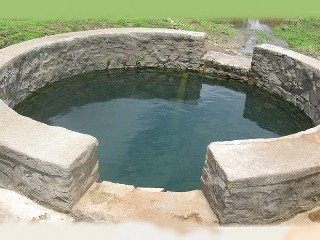
Water from a dam or lake is supplied through taps to some villages, towns and metropolitan cities by Panchayats, Municipalities, etc. During adverse times, tap-water supply could get disrupted due to failure of electric supply to the pumping stations, damage to the dam due to heavy rains, insufficient rain in the region of water reservoirs such as lakes, etc. Under such circumstances, Government tries to supply water through water tankers; but during the adverse times, transportation of water-tankers may also stop due to fuel shortage. During droughts, village rivers may dry up. Taking all these into consideration, find a place with underground water source near your house and dig a well. If this is not possible, at least dig a bore well. Well is preferred to a bore well, because during the adverse times, getting spare parts, mechanics, etc. for repairing pumps may be difficult. Before digging a well or bore well, consult an expert to detect the supply of groundwater. Invest only if you are sure to find water at that spot. If the well or the bore well has plenty of water, it can be used for farming, horticulture, etc.
3 B 1 A. Implement various measures to increase the groundwater level
The groundwater level reduces due to scanty rainfall, excessive pumping, etc. Efforts ahead can increase the groundwater level leading to availability of more water for wells and bore wells in the surrounding areas. Among these measures, take collective measures at the village level, such as building dams over streams, ploughing the river bed, etc. For such work, take permission from the local administration.
3 B 1 A 1. Take advantage of Government schemes
Either individually or collectively, villagers should try to take advantage of Government schemes, such as ‘Collect and conserve water’ scheme of the Maharashtra Government.
3 B 1 A 2. Build small dams on streams at various places.
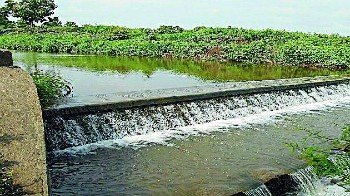
3 B 1 A 3. Ploughing the bed of the river flowing by the village
‘Every year during the rains, fine particles of mud from the muddy water in the river, collect in the sand on the river bed. Collection of fine mud particles thus year after year, results in formation of their layer on the sand over the river bed. This blocks the porousness of sand and obstructs seepage of water from the river bed into the groundwater. As a result, the groundwater level in the surrounding area keeps reducing year after year. As a remedy, some villages experimented with ploughing the river bed, which was successful. Information is given ahead.
A. Villagers residing on the banks of River Gomai successfully raised the groundwater level by ploughing the river bed and thus, increased its water seepage capacity
In Dambarkheda village, Taluka Shahada, District Nandurbar, Maharashtra the situation was the same as described above. Dambarkheda is situated on the banks of River Gomai. This River has water for 4-6 months a year. Yet, the level of water in wells and bore wells in Dambarkheda had reached 500 to 700 feet deep. As a remedy, the villagers ploughed the dried river bed along the flow and across the flow during the summer, using implements such as tractors, wooden ploughs, iron ploughs etc. Consequently, a lot of water seeped through the river bed during the monsoon, and within 24 hours of rainfall, the level of water in the wells and bore wells came up to 90 feet from 500 to 700 feet.
Later, people in many villages on the banks of River Gomai (upto Khetiya in Madhya Pradesh) ploughed the river bed and let the water seep and supplement the groundwater instead of water flowing away (meaning, getting wasted).’ (Ref.: Article from WhatsAapp)
3 B 1 B. Some instructions
1. In case of financial difficulty, a well or bore well can be dug collectively by a few families.
2. Install a pulley on the well to draw water manually. We must get accustomed to drawing water with the help of a rope on the pulley. Keep a spare rope at hand as well, in case the rope in use wears down. Install a solar pump if possible. Even if a solar pump is installed, retain the pulley system, because during cloudy weather solar pump will be useless.
3. If water in the existing well does not last till the onset of monsoons, consult an expert and increase its depth, so that you have sufficient water till the onset of monsoons.
4. Install a solar pump and a hand pump in addition to an electric pump on the already existing bore well. Install these facilities on a new well too.
5. Take care not to pollute the water of the well and the bore well through human errors.
3 B 2. Ensure at least 10-15 days water storing capacity for a family during the adverse times
During the adverse times, considering facts such as water supply from the Government machinery may become irregular, breakdown of the well or bore well pump, etc. arrangements will have to be made to store water sufficient to last for at least 10-15 days for the whole family by erecting water tanks.
3 B 3. Thinking of alternatives for a water purifier in the house, should it stop working due to power cuts
3 B 3 A. Buy a candle filter as a substitute.
3 B 3 B. Use alum for purifying water
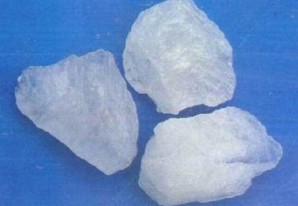
If you are compelled to use muddy water stored in a cask or a big vessel for drinking or for cooking, use alum as given ahead.
Hold a piece of alum say 3-4 cms. in size (Lemon size) in a clean (washed) hand and move it clockwise on the surface of the water in the cask or vessel 2-3 times. Then move it anti-clockwise 2-3 times. As a result, the mud in the water will settle at the bottom of the vessel in 3-4 hours. It takes one full day to purify the complete water.
Do not disturb the water till it is completely purified, else the mud that has settled at the bottom may get stirred and rise (making the water muddy again).
For using purified water in the cask or big vessel, pour the clean water very gently into another vessel and use the remaining muddy water for watering plants.
3 B 3 C. Water should be filtered and boiled
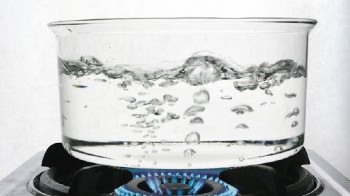
Before filling the drinking water in storage vessel, tie the open end of the cask or vessel with a thick and washed cotton cloth and filter the water through it.
You can use this filtered water for cooking. The cloth used for filtering the water should be washed properly and dried.Use this cloth only for filtering water.
Use the water filtered thus for drinking only after boiling.
3 B 3 D. Use a water bottle with inbuilt water purifier
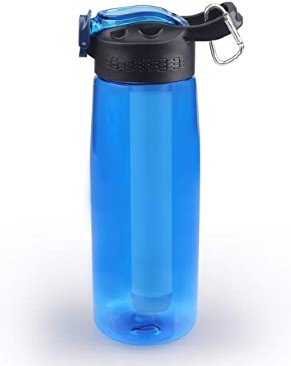
If such a bottle is filled with impure water, the water will get purified automatically after some time and become potable. Such a bottle is very useful during sudden travel or while residing in an unfamiliar place during the adverse times; because, every time there may not be certainty of getting potable water. Such a bottle purifier cost approximately Rs. 500 or more and are sold Online.
3 B 4. Water coolers may stop working due to shortage of electricity and hence, think of some easy alternatives for cooling water
3 B 4 A. Use a big earthen water jar or pot
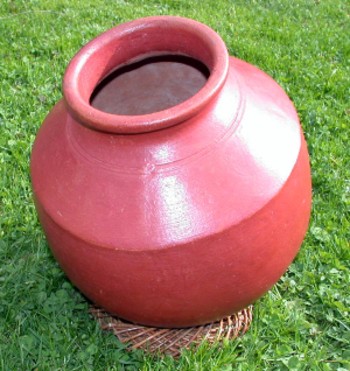
‘In villages, people use big earthen jars to cool water. This big earthen jar is buried in a slanting position by digging a pit in the house. This jar should be approximately 1 foot above the floor. Burying the jar in a slanting position facilitates removal of water and cleaning.
We can also use earthen pots for cooling water.
3 B 4 B. Wrap the glass bottle, copper vessel or cask very tight with a wet cloth
Fill a glass bottle, copper vessel or cask with water and wrap them tight with a wet cloth. The water will become cold in 3-4 hours. When the cloth dries up, wet it again and wrap it. If you need colder water, then you will have to wet the cloth repeatedly.
– H.H. Vaidya Vinay Bhave, Sanatan Ashram, Ramnathi, Goa. (10.12.2019)
3 B 5. Some instructions about water consumption
3 B 5 A. Use water judiciously
1. Everyone, from elders to youngsters in the house, should make it a habit to use water very judiciously while brushing the teeth, bathing, mopping the floor, washing clothes, washing the car, etc.
2. Use drip or sprinkler system for watering the garden around the house or for farming.
3. Cover the soil at the base of plants with dried leaves or grass during summer. This will stop rapid evaporation of water from the soil. Thus, water will be saved.
3 B 5 B. Collect rain water in casks

Keep a cask below the water that is falling from the roof of the house during monsoons. This water can be used for many purposes in the house.
3 C. Consider the following alter-natives
when there are interruptions in electrical supply
There is every likelihood of interruptions in electricity supply of the electricity department during adverse times. There will be power cuts for prolonged periods during storms. To avoid inconvenience caused by stoppage of electrical appliances such as lights, fans, etc., so also not to hamper work, some alternatives are given ahead. Give a serious thought to these and select that which will provide electricity for a longer period. They will be useful even after the adverse times.
1 C 1 A. Generating electricity from rooftop solar panel
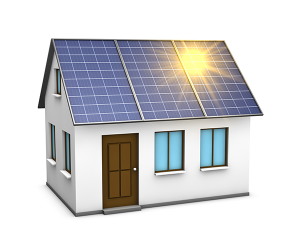
The installation of solar panel for generating electricity is done by the local dealer. This panel requires a minimum of 100 sq. ft. area on the roof and should be such that it is not obstructed from sunlight. If solar panels are fixed in such an area, electricity will be generated throughout the day and the batteries will get charged. If for some reason the electricity supply from the Electricity Board is stopped or by putting off this power supply, appliances in the house such as lights, fans, fridge, etc. can be switched over to solar energy. When the solar installation is of suitable capacity LED bulbs, torches, battery operated bicycle, 2-wheeler and 4-wheeler can also be charged. A house with a tiled roof or slab can install solar system on its roof. Flat owners too can install solar system collectively on top of their building (On the terrace).
Excess power generated by the solar panel is bought by the Electricity Board. Government gives subsidy for installation of solar power generation units.
Subsidy and concessions for solar systems are available only for houses, shops, etc. You can get more information on this from the respective dealer.
3 C 1 B. Using a generator set
3 C 1 C. Using a hand operated generator set
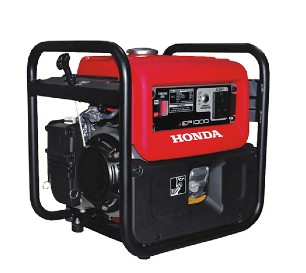
It has the capacity of charging the battery of a mobile phone.
3 C 1 D. Using engine driven generator set
These generator sets run on petrol, diesel or gas. They have the capacity to generate few Kilowatts (1 Kilowatt = 1,000 Watts).
3 C 1 E. Installing UPS (Uninterrupted power supply) to get continuous power supply
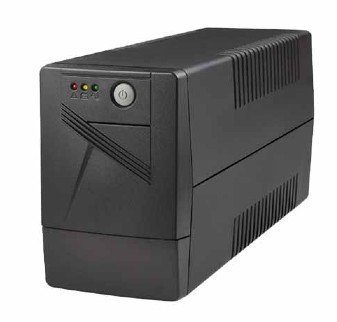
If power supply from the Electricity Board is interrupted, UPS takes over automatically and power is supplied without break from the batteries. Once the external power supply is restored, this system goes automatically into charging mode and charges the batteries which were discharged. This system is helpful when the power cut continues for a few hours.
3 C 1 F. Generating electricity through windmill

During the last century the idea of installing windmills on tall buildings was given a thought during the designing stage of the buildings and implemented in some countries. However, availability of wind throughout the year in addition to the sound of the turbine and the vibrations generated during its running has made this concept uneconomical and unpopular. For larger generation of electricity, windmills have to be installed on a mountain or on a plateau.
Compared with solar power, power generated through windmills has many limitations. Besides, power generation using a windmill, because of its complex nature, has to be strictly done under the guidance of an expert.
3 C 1 G. Making use of appliances such as LED bulbs, battery, etc. which get charged by electric power
Fully charged LED bulbs, batteries, tube lights etc. can give light for some hours.
3 C H. Other traditional alternatives
Above mentioned alternatives have limitations; for example, generation of solar energy in cloudy weather is difficult; if there is fuel shortage during the adverse times, engine driven generators will not work. At such times we need to have traditional alternatives such as chimni (Small-shaped lamp like a lantern), lantern, small mashal / torch. This will give us some light at night.
To read Part 5, click here Preparation required to survive during the adverse times Part 5
Reference : Sanatan’s forthcoming Text series – ‘Preparations required to survive the adverse times’
(Copyright : Sanatan Bharatiya Sanskruti Sanstha)

 Terrace gardening a lifeline for calamitous times (Part 2)
Terrace gardening a lifeline for calamitous times (Part 2) Terrace gardening a lifeline for calamitous times (Part 1)
Terrace gardening a lifeline for calamitous times (Part 1) Activities to be undertaken daily to maintain God’s grace and to build a protective shield...
Activities to be undertaken daily to maintain God’s grace and to build a protective shield... how to improve mental strength to face a terrible situation such as a riot
how to improve mental strength to face a terrible situation such as a riot Preparation required to survive during the adverse times Part – 10
Preparation required to survive during the adverse times Part – 10 Preparation required to survive during the adverse times part – 9
Preparation required to survive during the adverse times part – 9